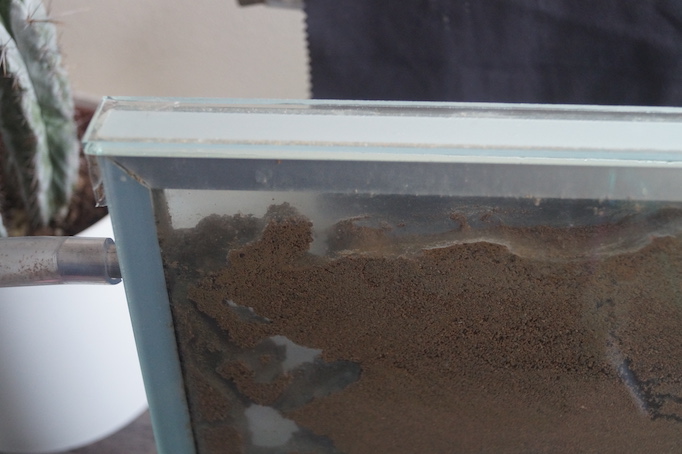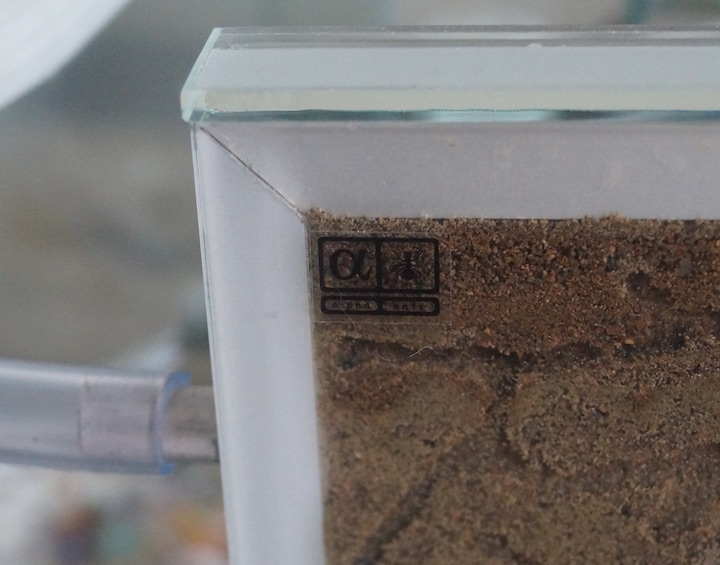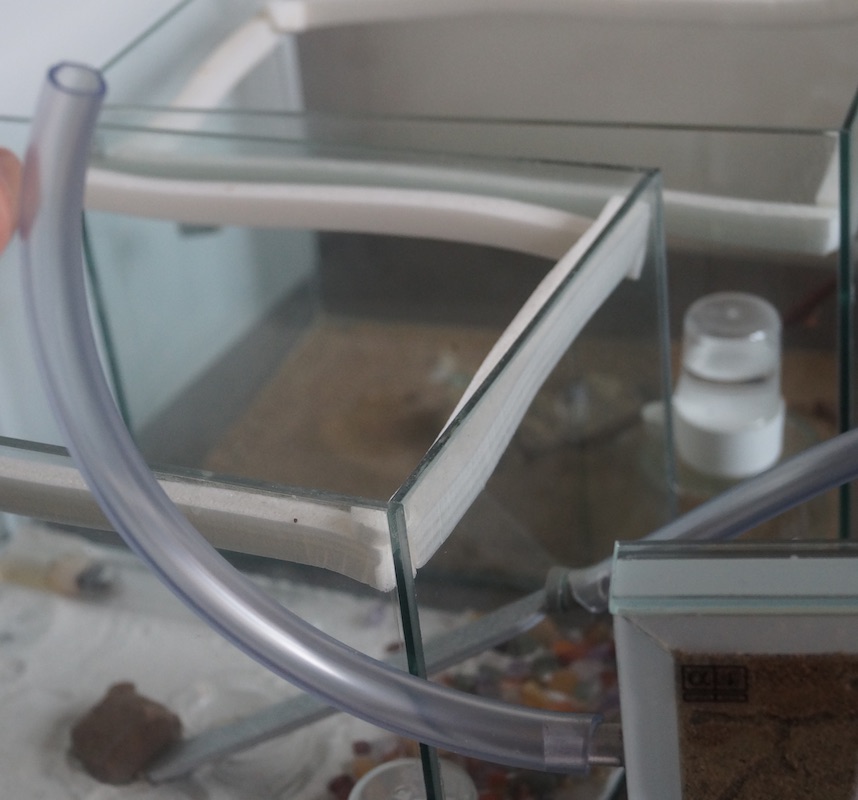One of the most common questions I get asked by new ant keepers, and even some of the more experienced ones, is that of how to add more water to the soil of your ant farm, when the ants are already resident within. Then there is the question of how much water to add, and how often. To the beginner or inexperienced ant keeper, this can be a real concern. In this article I aim to allay those fears and to try to give some helpful advice.
The first question I would ask anybody who asks such questions is, what species of ant do you keep? There are some 12,000 to 15,000 species of ant in the world, depending on who you ask. Some ant species prefer much drier conditions, others far damper. Therefore, the amounts and frequency of water top ups will vary a lot.
As this website is mainly about British ant species, I will limit the information to those. However, much of the information contained herein can be applied to any ant species, with some adaptations.
In his excellent book, Ants, written in 1977, and which I personally think is the best book on British ants out there, Dr M.V. Brian stated that there was evidence to support that the British species, Lasius niger, prefer more moist soil to nest in, perhaps more so than many other species. I have been keeping Lasius niger colonies for over 30 years, and I would have to agree with him. Lasius niger really do seem to prefer more moist nests.
How to add water
I have already produced a guide on this website which details how to prepare your ant farm for ants. In this guide I detail how to add water, and the quantity required, prior to placing the ants in, using pictures and descriptions. That guide can be found by clicking HERE.
Adding water to an ant farm, when the ants are already resident, can be tricky. It really depends on where the ants have placed their tunnels. Whether you have filled your ant farm to capacity, with a nesting medium, such as sand or soil. What I mean by this is whether the soil reaches to the very top of the ant farm. The following two photographs demonstrate this.


Where there is a gap between soil and lid
If you have a gap between the level of the soil and the lid of the ant farm, you could open it to add water. The problem with this is that there could be ants on the surface of the soil, or underneath the lid. They may also have placed cocoons immediately below the lid. Removing the lid will cause them to come rushing out to investigate. They will probably be quite angry too. This is not much of a problem if it is just a very small number of ants.
You could quickly pour in a little water, replace the lid. Then capture any escapees. Place them into the nesting box of the ant farm, so that they can make their own way back. The more ants means removing the lid can mean a large number of escapees. The main problem with this, apart from the potential for escapees, is that you may not really have much time to add more water in a controlled manner, before more ants pour out of the nest to investigate. There is also the risk of injuring or killing ants as you replace the lid.
Alternatively, you could use the same instructions for those ant farms with no gap between the top of the soil and the lid, which now follows.
Where there is no gap between soil and lid
If you have no gap between the level of the soil and the lid of the ant farm, which is my preferred method if I have a separate foraging box added to the ant farm, then you could use the tube method of adding water. In the photograph below you can see I have a tube added to one of the ports, which is normally closed with a rubber bung. This tube is how I add water to this type of set up. I remove the bung, add a length of tubing onto the port, and then pour a little water into that tube. The water will run down the tube and soak into the soil.
As you can see in the picture, above, my ants have tunnelled extremely close to the port, but thankfully they have not reached it. Even if they do happen to reach the port, hopefully the tunnel will not have a large number of ants in it when I want to add water.
Adding the water
Adding the water to the tube can be tricky unless you have a funnel. Alternatively, you could use a syringe to squirt the water into the tube. I like this method of adding water as has a much lower chance of escapees, and a lower chance is disturbing the ants. If, when you go to add the water using this method, a few ants get washed away by the water, do not worry too much. Ants are quite resilient to drowning in cold water. When submerged in water for a short time the ants seem to fall asleep. Once the water drains away, the ant will start to dry, and it should eventually wake up again.

When to add water
It is dependant, for example, on what species of ant you have, and whether they are a dry climate or moist climate dweller. Also consider how damp/dry is the soil already. As I stated at the start of this article, I am using the British species, Lasius niger, as my example. Fortunately, ants in Britain are quite accustomed to the copious amounts of rain the country gets. They tend to live in damper soil than their cousins in drier countries.
The ant farms I use are very good at retaining moisture and therefore I hardly need to top the soil with water. The more tunnels and chambers present, the less soil for the water to be retained in. In Fig A. above you can see that the ants have made a great many tunnels, but they are quite evenly placed throughout the soil. This means that the nest can hold its moisture very well. My Lasius umbratus have removed so much soil from their current nesting box that it is more difficult to retain moisture.
Examine the soil
How I decide how much water to add, and when, I first examine the soil. Does it look dry? Is there any evidence of the soil crumbling? Are the ants having a tough time tunnelling? Do the ants tend to remain in one part of the nest, and, if so, is it a drier or damper area? This is a great indicator as to whether your ants prefer their nest dry or damp. If they tend to remain in the dry areas, and avoid the damper regions, then you know they prefer it dry. In this case you probably don’t need to add any water. If, however, you notice you have dry and damp patches in your ant farm, and the ants and their brood keep themselves to the damp areas, then you know they prefer it damp.
How much water to add?
This really depends how dry/damp your species of ant prefer their nests. I try to keep my Lasius niger nests so that the soil is slightly damp. If I have the soil all the way to the top of the ant farm, and the ants have not tunnelled there, then it’s going to be very easy for me to check. All I need to do is remove the lid and touch the soil. Is it dry to the touch?
Does the soil crumble when I move my finger across it? Does it feel damp or even wet? If it feels damp then you probably do not need to add water, less so if it is wet. If I cannot remove the lid due to the presence of ants, then I just have to rely on visual clues. Again, does the soil look damp? Are there patches throughout the ant farm that are drier or damper than other areas?
Ant Behaviour
What is the behaviour of the ants? Regardless of how much water you may need to add, the best bit of advice I can give you as to how much to add is this: use little amounts at a time. A few millimetres, say 5ml, at a time is probably best. Add the water and watch how quickly it soaks in; that is another good indicator of how dry the soil is. If the water is instantly sucked into the soil, and you can clearly see a much more marked differentiation in colour of the soil as the water soaks in, then you know it’s dry in there. If, when you add the water, there is no apparent change in the colour of the soil, and/or the water takes forever to soak in, then you know it’s probably damp enough.
Another indicator of water levels in the soil is the presence of condensation against the glass where the tunnels and chambers are. If condensation is present, then you do not need to water the soil anymore.
In summary
So, in summary here are the things you need to look for to indicate whether you need to add water to the soil of your ant farm:
- If you have the opportunity, remove the lid and touch the soil with your fingertip. How does it feel?
- When you remove the lid, sniff the soil? Does it smell dry or damp?
- Look at the soil through the glass. Does it appear obviously dry or wet?
- Is there condensation present on the inside of the glass?
- Does the glass, where there are tunnels and chambers, look dusty?
- What is the behaviour of the ants? Are they keeping to the drier or damper areas?
- Do the ants have apparent difficulty when tunnelling?
- Are the able to remove clumps of soil, or only single grains at a time? The latter might indicate soil too dry.
- Are there mould/algae in the soil? This would indicate too wet.
- Are there tunnel/chamber collapses? This may indicate too dry.
- Are large numbers of ants gathered around their drinking water supply? Do they appear to be transporting water to the nest? This can indicate a nest that is too dry for their liking.
I hope you have found this article of use to you. If you have any questions or wish to point out any issue with the information I have given, then please feel free to add a comment. Alternatively, you may send me an email via the CONTACT page.
Thank you for reading.
Can you mix the water and soil together before you add it to the ant farm? (Thank you for your tutorial) I did use a pipette to add water but I think I may have added a bit too much. 🙁 Can I use dry sand to top up the ant farm (it is only half full at the moment when I realised my mistake) to try and absorb some of the moisture or just leave it to dry over time?
The ants (ATM) are now in the farm but haven’t really come out of the test tube yet (harvester ants) and I’m just wondering if I should just start again?
Thank you
Hello Adam
I have not had very much experience with Harvester ants at all, but I believe they do prefer drier soil.
If you feel you have made it too wet, then yes you could top it up with dry sand, which will help to soak the excess water up.
Keep an eye on the dry sand as it will need to be slightly damp in order for the ants to create tunnels. So if the dry sand has not soaked up enough water after, say, 24 hours then you’ll need to add a little more water to the dry sand – but only very little at a time.
The damper sand at the bottom will eventually become less damp in time. The ants will also help aerate and therefore dry out the sand quicker when they tunnel into it. If it’s too damp for their liking near the bottom they may avoid digging into it until it dries out a little more.